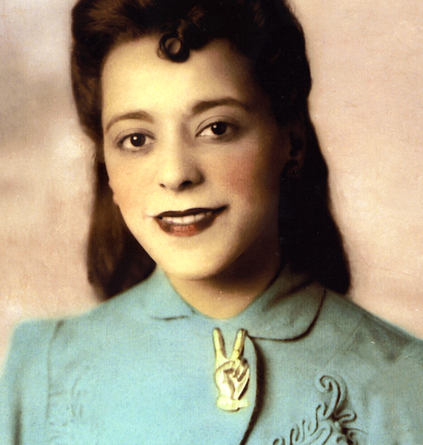Viola Desmond’s Story on Film
The announcement that Viola Desmond will grace Canada’s ten-dollar bill has brought her story to the attention of a new generation of Canadians. It is a story of profound courage and resolve that Iain MacLeod and Brian Murray, two Nova Scotian filmmakers, have told in different but equally compelling ways.
MacLeod’s film was a drama shot in black and white back in 1996, whereas Murray’s film is a documentary made in 2012 for his employer, Communications Nova Scotia, to commemorate Canada Post issuing a stamp in Desmond’s honour. Both films run about 45 minutes.
I consider both filmmakers to be good friends. MacLeod has made a rash of short comedies over the years, culminating in his 75-minute feature Your Money Or Your Wife which was shown in a prominent slot at the 2015 Atlantic Film Festival. Iain worked as an assistant director on a TV pilot I co-wrote and produced in Bear River in 1998. Brian Murray, on the other hand, is a seasoned musician I’ve played with multiple times over the years.
In a presentation on Nova Scotia film history I made to the Elder Learners at Saint Mary’s University two weeks ago, I talked about the Viola Desmond story in the context of it beginning as an important moment in the history of Nova Scotia’s film exhibition history, that became a national turning point in race relations and social justice.
Exhibition often doesn’t get its due when it comes to film history, and yet it is crucial to the larger whole of the film scene. Nova Scotia can also boast, if that is the right word, of another nationally-recognized film exhibition narrative in the fight over the banning of Last Tango In Paris, but that is another story for another time.
In the films about Viola Desmond’s story, Iain MacLeod took an oblique approach, never showing the actual incident itself but rather letting the word “spread around the town.” In November 1946, he deftly used Desmond’s narrative to set up the tension in order to portray an inter-racial romance. The film was an ambitious costume drama that played to a packed house at the 1996 Atlantic Film Festival. Its unusual length and rough language made further distribution a challenge, and sadly it is mostly unseen today. I remember it vividly, however, as it marked MacLeod as a filmmaker of vision and substance.
For Brian Murray and his film, Long Road To Justice, the story of Viola Desmond was one that needed to be simply and directly retold using modern-day documentary techniques. Because there is little to no footage of Desmond herself, Murray used a blend of dramatic re-creations, punctuated by expert ‘talking head’ testimony and period stock footage. Aside from a quick flash of the Angus L. Macdonald Bridge, which opened in 1955, nine years after Viola Desmond’s arrest in 1946, the footage is effective in establishing the “look” of Nova Scotia in the early post World War II years.
Perhaps most importantly, Long Road To Justice provides more depth and insight to a story that continues to gain resonance and momentum. As national audiences now catch up to speed with the narrative, we can all consider the extraordinary contribution Viola Desmond has made to Canada’s cultural fabric.
Ron Foley Macdonald
Latest posts by Ron Foley Macdonald (see all)
- Mary Tyler Moore in Nova Scotia - January 30, 2017
- Viola Desmond’s Story on Film - December 11, 2016
- Bruce Springsteen’s “Born to Run” - December 9, 2016


I appreciated very much the documentary and would like to learn more about Brian Murray and Viola’s family, thank you!